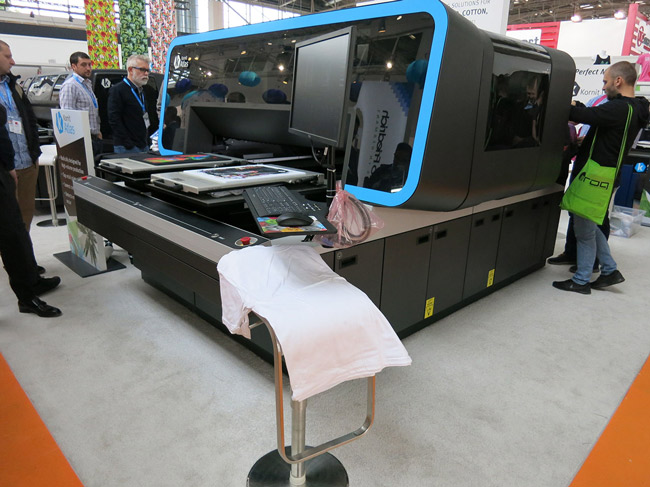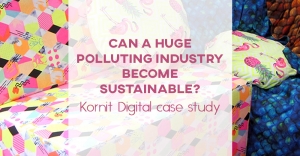Search
Media & Substrates
Bioplastics, are they really eco-friendly?
Plastics and “green choice” usually don’t go together as most plastic materials are made from petroleum, these include: polyethylene, PVC, polypropylene, polystyrene, polyester, nylon and acrylic.

Most plastics don’t decompose. This means plastic can stick around indefinitely, destroying marine ecosystems. (noaa.gov)
In the past decades, the search for an eco-friendly alternative to petroleum based plastics has led to the development of several bioplastics; materials specifically made from renewable resources and therefore diminishing the amount of energy required to produce them. Some are made from plants, most often from sugar cane or cornstarch, although they can also be produced from potatoes, or other plants, these plastics are often referred to as PLA (PolyLactic Acid or PolyLactide) or Cellulose Acetate.

To transform corn into plastic, corn kernels are immersed in sulfur dioxide and hot water, where their components break down into starch, protein, and fiber. The kernels are then ground and the corn oil is separated from the starch. (columbia.edu)
Bioplastics are generally considered to be more eco-friendly than traditional plastics, this isn’t necessarily true, and bioplastics have a significantly lower carbon-footprint than traditional plastics over their lifetime. But in order to degrade bioplastics, most of them need high temperature industrial composting facilities to break down the material in less than 3 months, but it will take about 1,000 years to degrade in a landfill.

Landfills prevent waste from biodegrading, especially plastics. (thisisplastics.com)
Very few cities have the infrastructure needed to degrade bioplastics and the problem magnifies when these plastics are not separated correctly from other plastic types such as PET (polyethylene terephthalate). The problem is when plastics get recycled, they are not compatible and the resulting plastic batch may get rejected as a consequence.

Plastics need to be classified in order to be recycled correctly.
The alternatives bioplastics are limited, PHA (polyhydroxyalkanoate) is one of them, a plastic made from living things. PHA is a unique polyester made naturally by certain bacteria, generally from organic waste. It is used to make plastic bags and single use containers; in the medical field is where this material shines, thanks to its biodegradability it can be used to make sutures, bone plates, orthopedic pins, etc.

Plastic bags and other articles made from PHA plastic. (wur.nl)
PHA is biocompostable and marine degradable and has no toxic effects, but currently is difficult and expensive to produce.
Source: University of Florida, Columbia University
Columbia University
https://blogs.ei.columbia.edu/2017/12/13/the-truth-about-bioplastics
University of Florida
https://sfyl.ifas.ufl.edu/media/sfylifasufledu/flagler/sea-grant/pdf-files/microplastics/Bioplastics-vs-petroleum-plastic-final.pdf
Can a huge polluting industry become sustainable? | Kornit Digital case study
When it comes to sustainability, there are some industries, brands or products that immediately come to our minds, but when speaking about fashion you may be aware that it’s one of the most polluting industries of the world. Fast fashion has become a gigantic market and thousands of people buy clothes constantly and without measure. Huge fashion chains are growing nonstop and it’s not only shocking how much waste they produces per year, but the amount of carbon, heavy metals and plastics that end up in the sea are slowly hurting our planet. Fortunately for us, there are big brands that are environmentally aware of that and are doing something about it. That’s the case for Kornit Digital.

Fashion environmental impact, courtesy of The Guardian.
Kornit Digital is a company that has been on the market for a while. Founded on 2002 and with offices in the USA, Europe and Asia Pacific. Their products are being sold in more than 100 countries all over the world. They develop and manufactures different types of products for the textile industry. Well-known for their NeoPigmen process and their sustainability standards Kornit have been implementing green practices to their processes to contribute to reduce the high impact the textiles industry creates.

Kornit Atlas t-shirt printer exhibited at FESPA Munich 2019, FLAAR-REPORTS archive.
The company is very vocal about their beliefs and their actions to become a more sustainable brand each day. Kornit, as a leader brand in the fashion industry, as they mentioned, work with a zero-water waste and low carbon footprint policies, also they avoid manufacturing un-purchased clothes. All of this to reduce or minimize the environmental footprint. They believe in creating this mindset to performance better and greener practices in every steps of their processes.

Waterless
It is shocking knowing the level of water waste on every conventional dyeing and textile printing process. The daily water consumption on a regular textile mill with a production of 8000 kg of fabric per day, goes for about 1.6 million litters, 16% for dyeing and 8% in printing. It takes about 500 gallons of water to produce enough fabric to cover a sofa. This without mentioning the water is polluted with toxic chemicals. Kornit’s technologies are reducing this high impact with a 100% waterless process utilized in every printing system they manufacture, getting rid of pretreatments, steaming or washing required.

Printed samples at FESPA 2018, FLAAR-REPORTS archive
Neo Pigment Inks
Their revolutionary water-based inks are free of heavy metal, formaldehyde and Alkylphenol Ethoxylates (APE). This makes in general the printing and dyeing process, a much more convenient in terms of non-hazardous, non-toxic and biodegradable. All their processes combined (waterless printing process, biodegradable inks and energy saving system) created an eco-friendly and a more sustainable alternative for textile printing.

Compliance
Since day one they have been environmentally conscious and one of the commitments they have is to reduce the footprint of the company, their partners and customers through their sustainable policies that address the ever-changing industry needs and standards.

Kornit Storm HD6 Color ICT exhibited at APPPEXPO 2019, FLAAR-REPORTS archive
So, despite apparel and fashion industries have been really harmful for the planet over many years behind, bid brands like Kornit are reducing this giant impact and providing more conscious options without leaving behind great quality and really good-looking products. So, if you are looking for greener options, always reach for companies with sustainable ideals.









